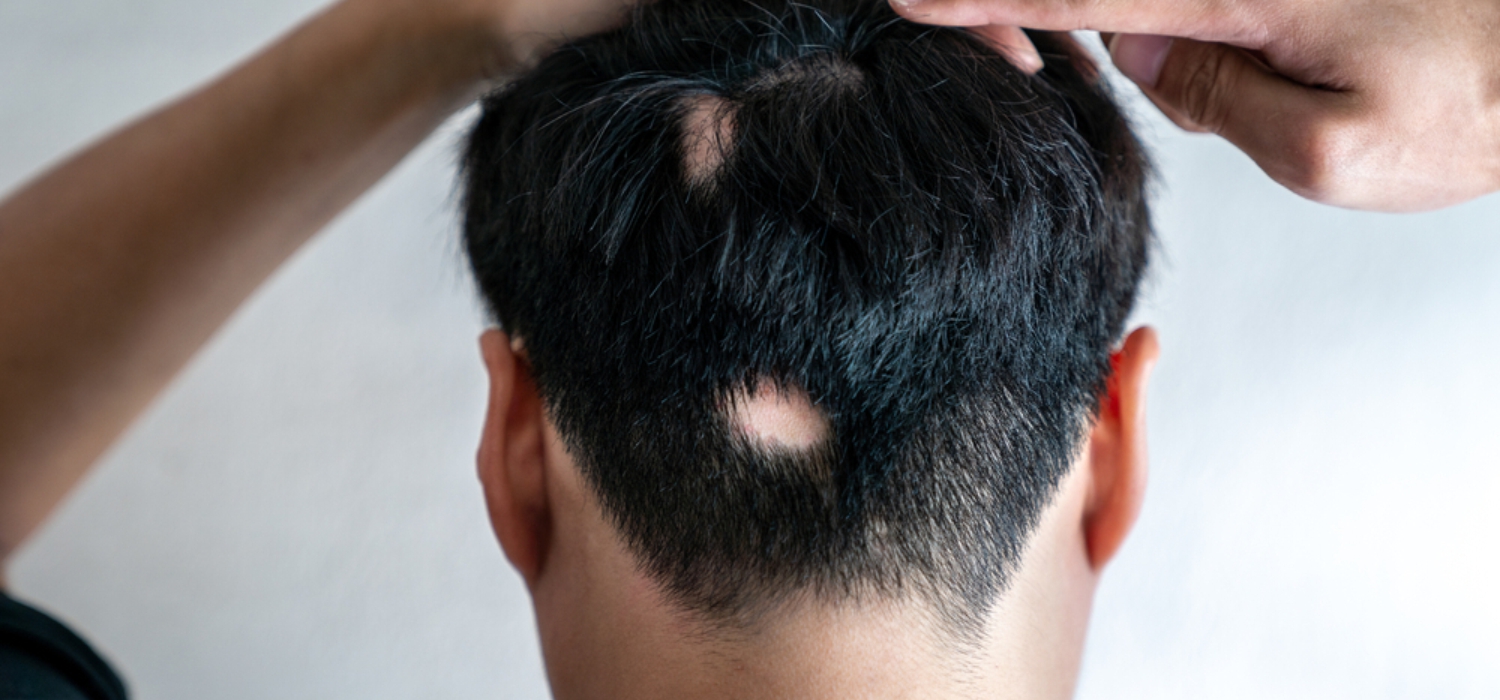Working Time
- Mon-Sat 10:00 am - 1:30 pm & 4:30 pm - 8:30
Sunday Closed
Alopecia areata

TREATMENT:
- If patches are few in number then hair may regrow spontaneously.
- Application of corticosteroid creams to the affected skin is effective in some cases but takes longer to produce results.
- Steroid injections are commonly used in sites where the areas of hair loss on the head are small or especially where eyebrow hair has been lost.
- Other treatment recommended are topical application of minoxidil, irritants (anthralin or topical coal tar), and topical immunotherapy diphencyprone
- Light therapy is also called photochemotherapy or Targeted phototherapy is effective and useful in children who are otherwise unfit for above treatments.
- Oral imm
- unosuppressants, like methotrexate and cyclosporine ican be used with good results especially in resistant or widespred disease.
- Oral biologicals like Tofacitinib.
However, as relapse of the condition may occur following successful treatment, hence long-term treatment is recommended.
Alopecia areata is characterized by sudden development of round to oval patches of complete baldness. The underlying skin is unscarred and looks superficially normal. patient has no complains and are generally healthy. Nails may have pitting.
Usually it affects the scalp and beard, but may occur on any part of the body with hair. Sometimes patients can present with different presentations like - Usually patients present with one or few bald patches on scalp or beard but sometimes may develop multiple patches. Diffuse alopecia areata - If patches are more diffuse over whole scalp, Ophiasis - If hair loss is along the circumference of scalp. Alopecia areata totalis - the person loses all the hair on the scalp. Alopecia areata universalisIf - all body hair, including pubic hair are lost.
Alopecia areata is thought to be autoimmune disorder in which the body attacks its own anagen hair follicles and suppresses or stops hair growth. It may be familial in nature. It is common in children. Sometimes it is associated with other autoimmune diseases like vitiligo, thyroid dysfunction, atopic dermatitis, rheumatoid arthritis, type 1 diabetes, and celiac disease.


